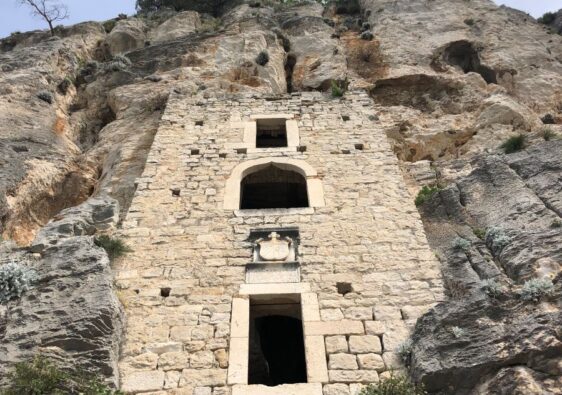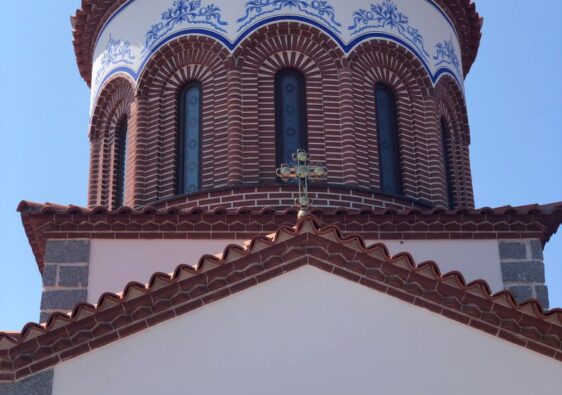I was not prepared to see quite as much variety as I have in this European capital city. Each day I leave my abode, it seems I am discovering a new style. Perhaps arriving from Podgorica, where one is inundated with sameness, the difference seems starker. The fascinating architecture of Skopje Macedonia is both intriguing and delightful.
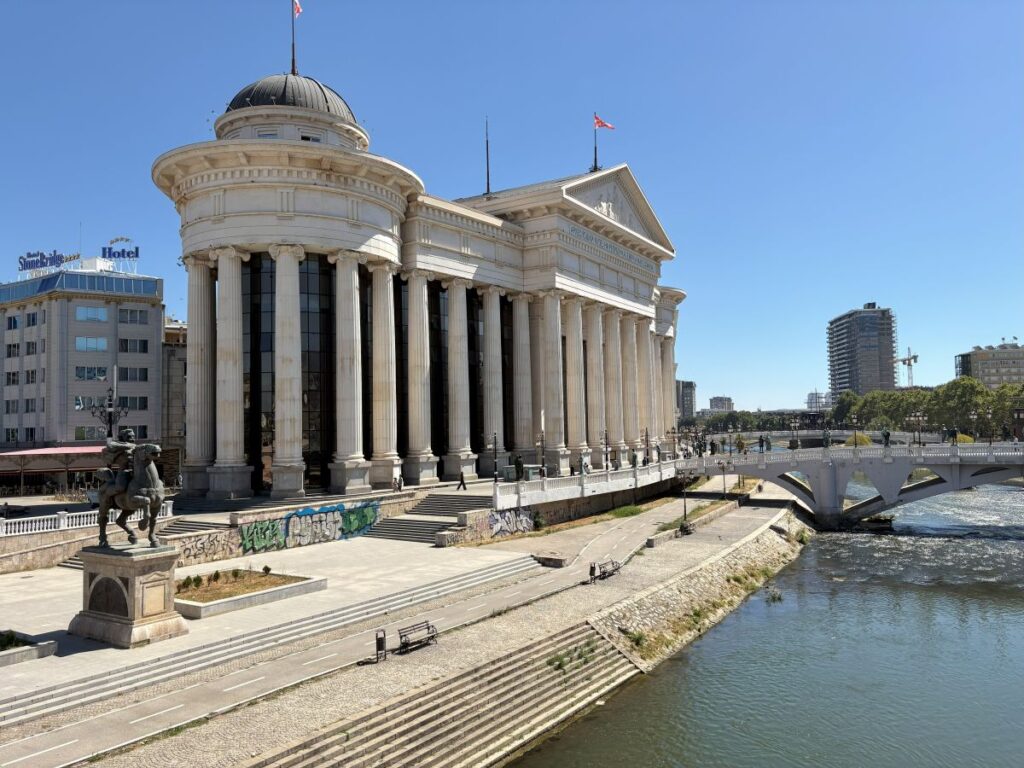
Brief History
Skopje has been a settled area since around 4,000BC. The ancient Roman town of Scupi is a mere three kilometers away. After the Romans, the Byzantines made a big mark. And then of course the 520 years that the Ottomans occupied the city.
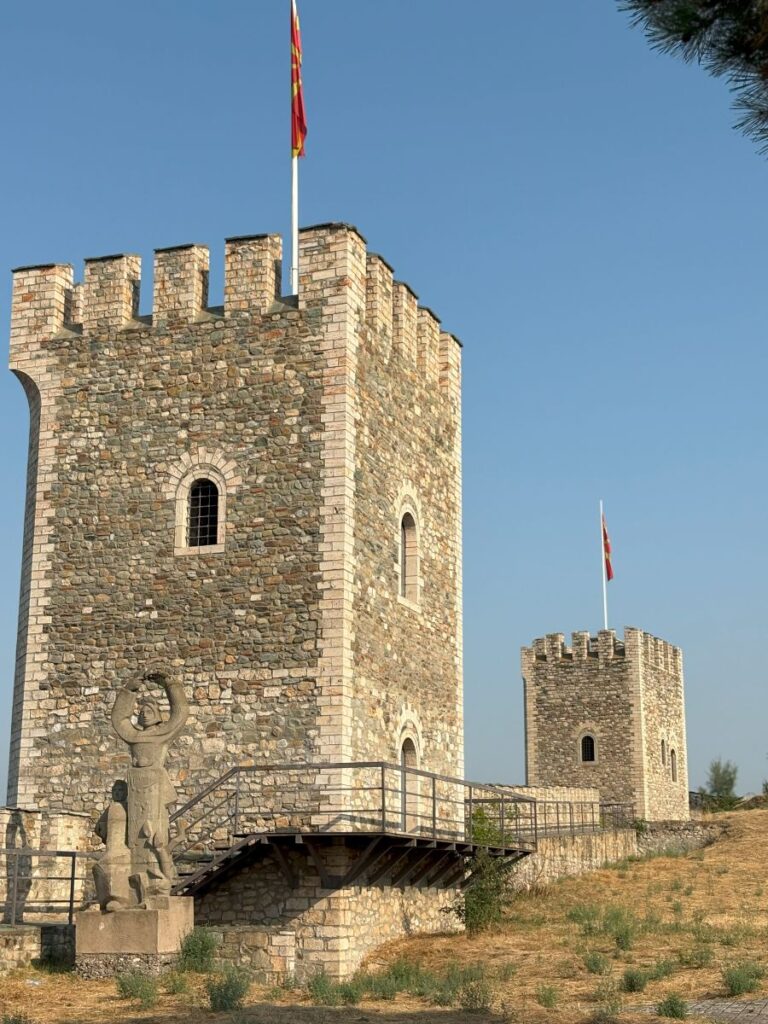
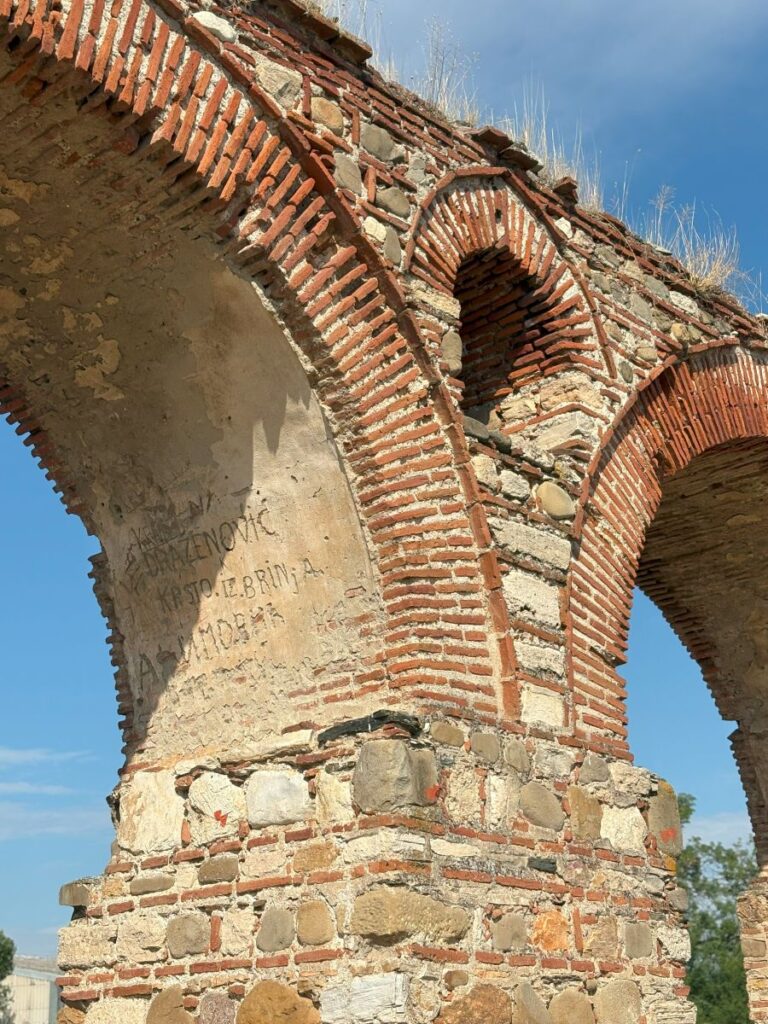
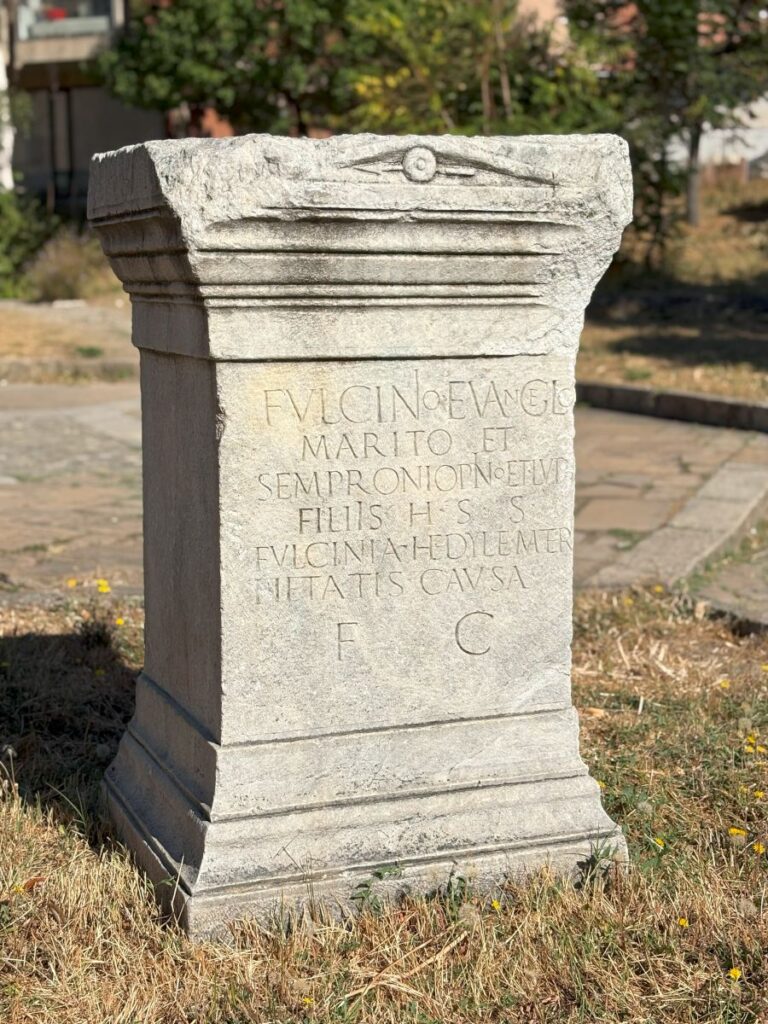
From then we have the Bulgarians, Yugoslavia and current day Skopje. This history is vast, but what is most impressive is how much of the recent history has been saved.
Ottoman Buildings
After seeing that almost nothing is left of the Ottomans in Podgorica, I have been pleasantly surprised to find many old stone buildings in Skopje. These range from Caravanserai (travellers inns) to hammams and mosques.
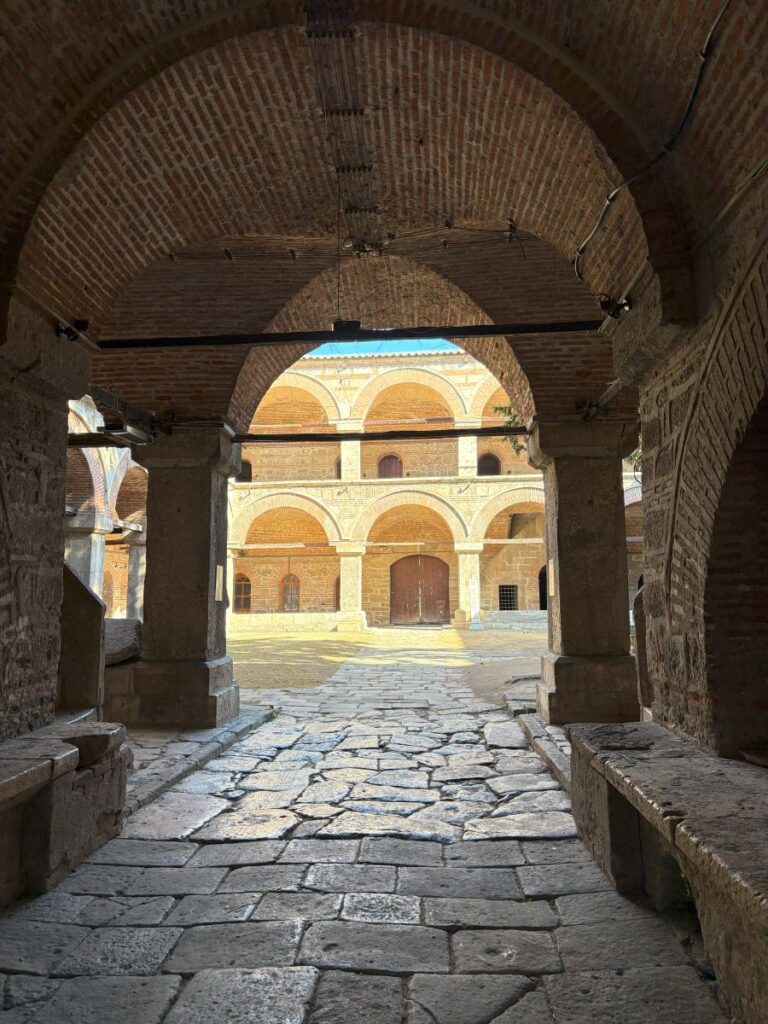
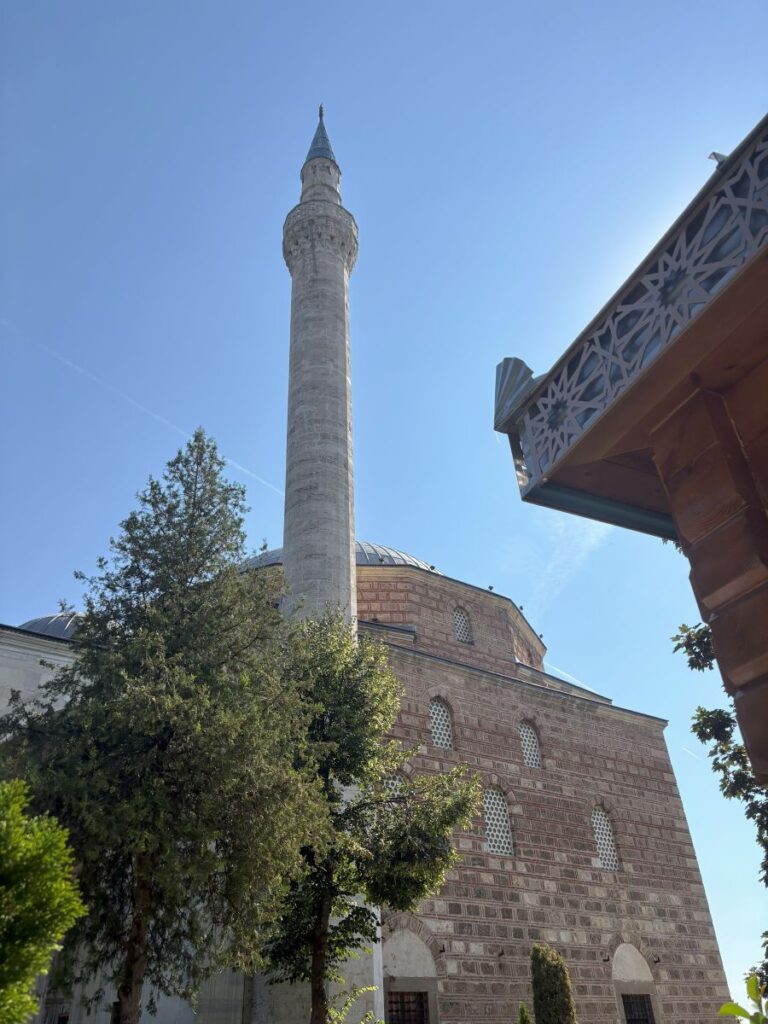
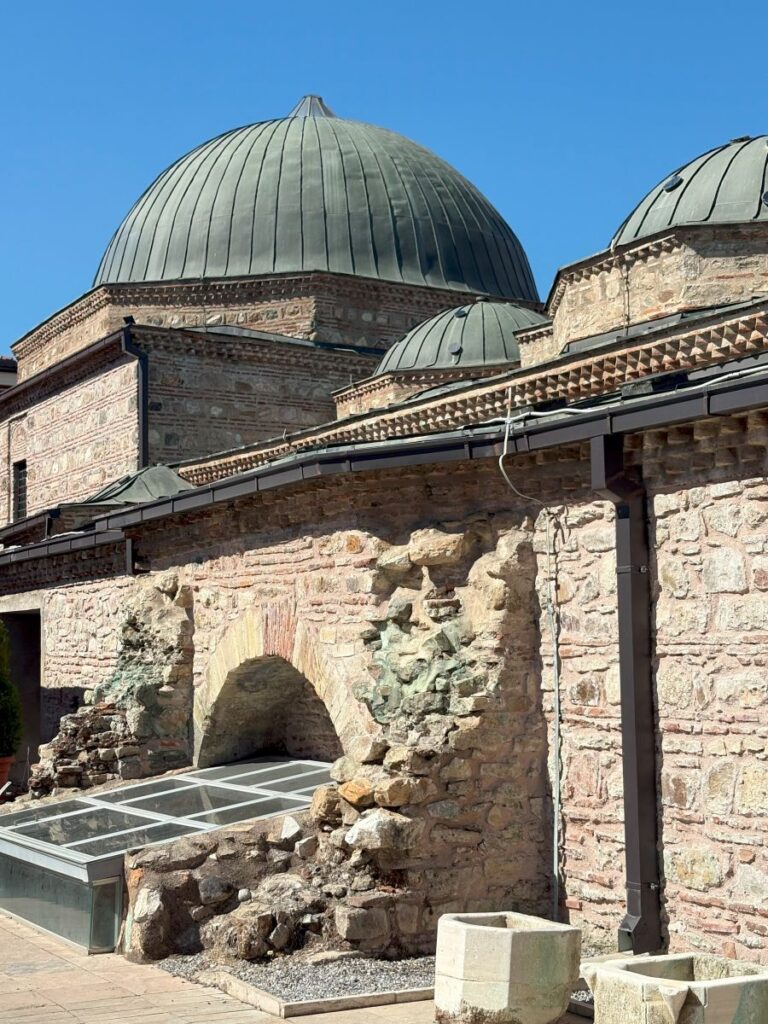
Walk anywhere in the Old Bazaar and you can experience the feeling of stepping into a time machine. Be whisked away to a maze of narrow cobbled streets, winding their way through this enchanting neighbourhood.
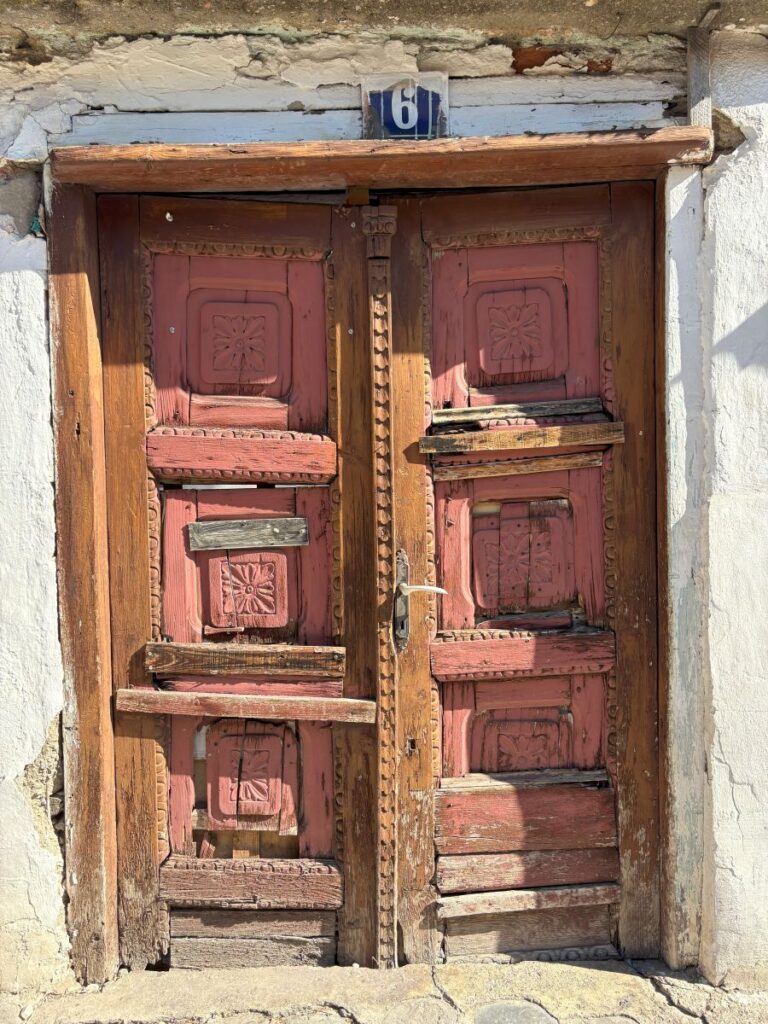
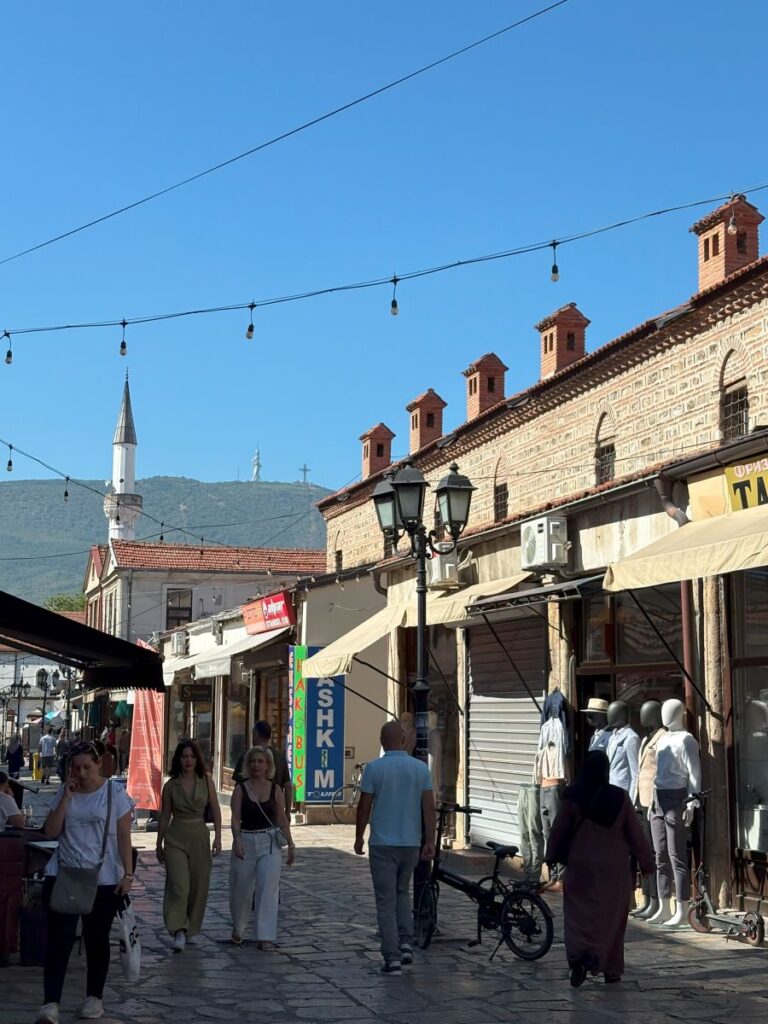
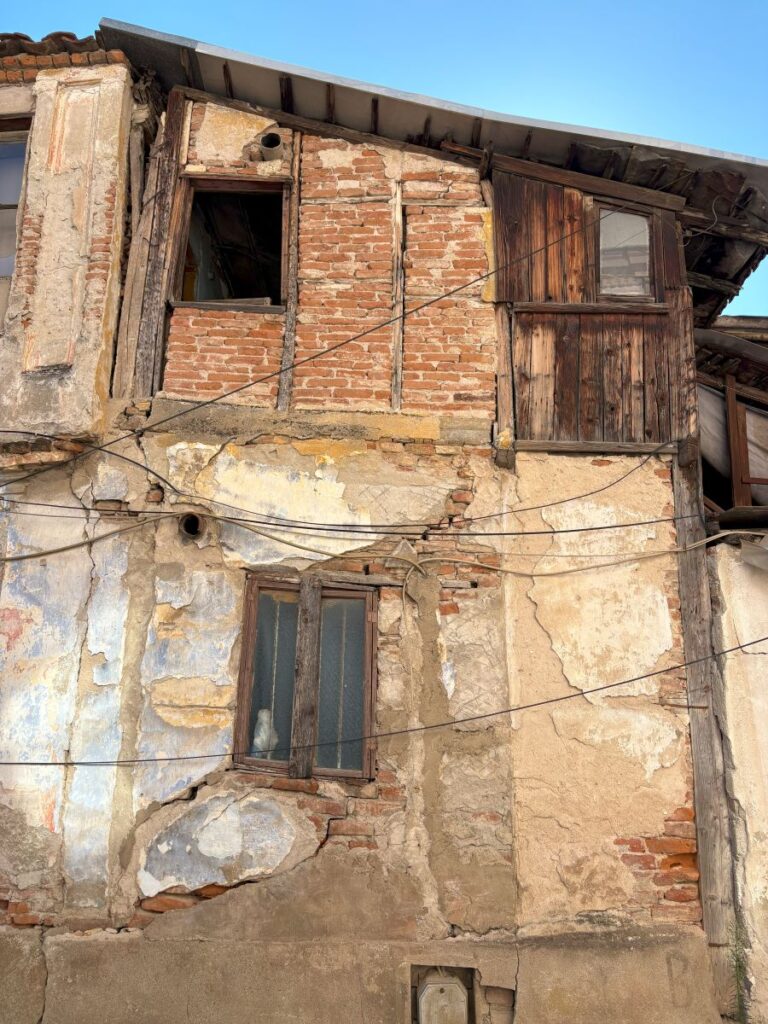
Most of these buildings were constructed in the 15th century and were refurbished as part of the Skopje 2014 project. Their presence and value tell a lot about the society and how much they treasure their past.
Yugoslav Period
While the country was under communist rule, Skopje was transformed. A large part of this was due to a massive earthquake that struck the region in 1963 in which 80% of the city was left in rubble. Almost an entirely new city was constructed with haste.
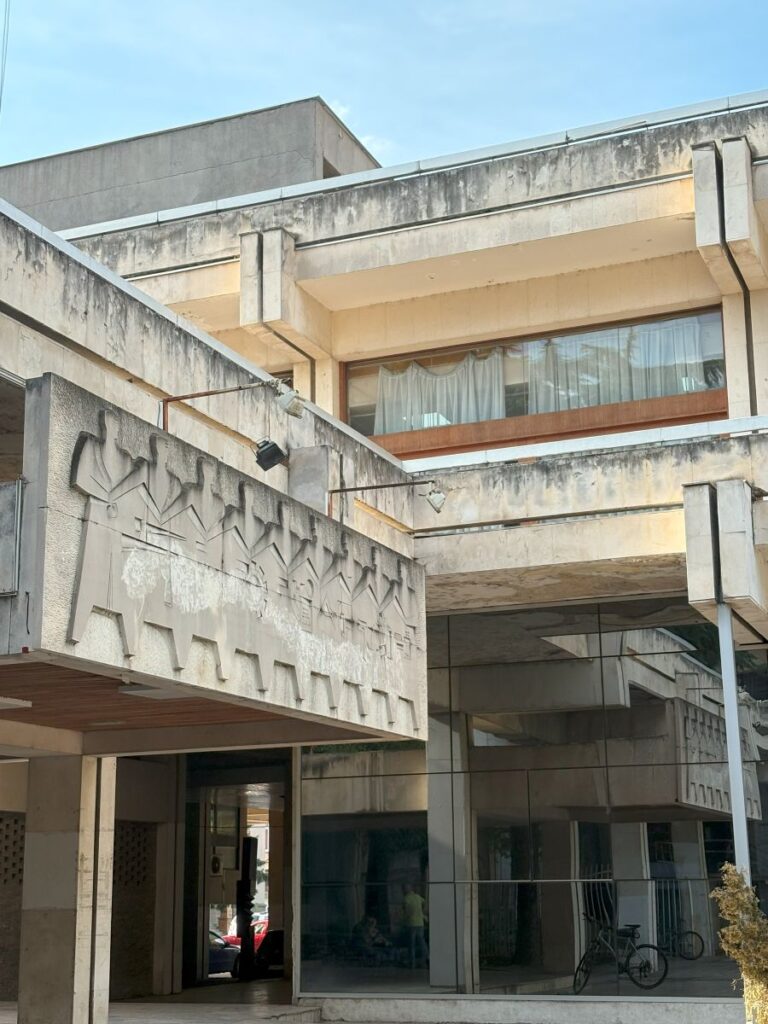
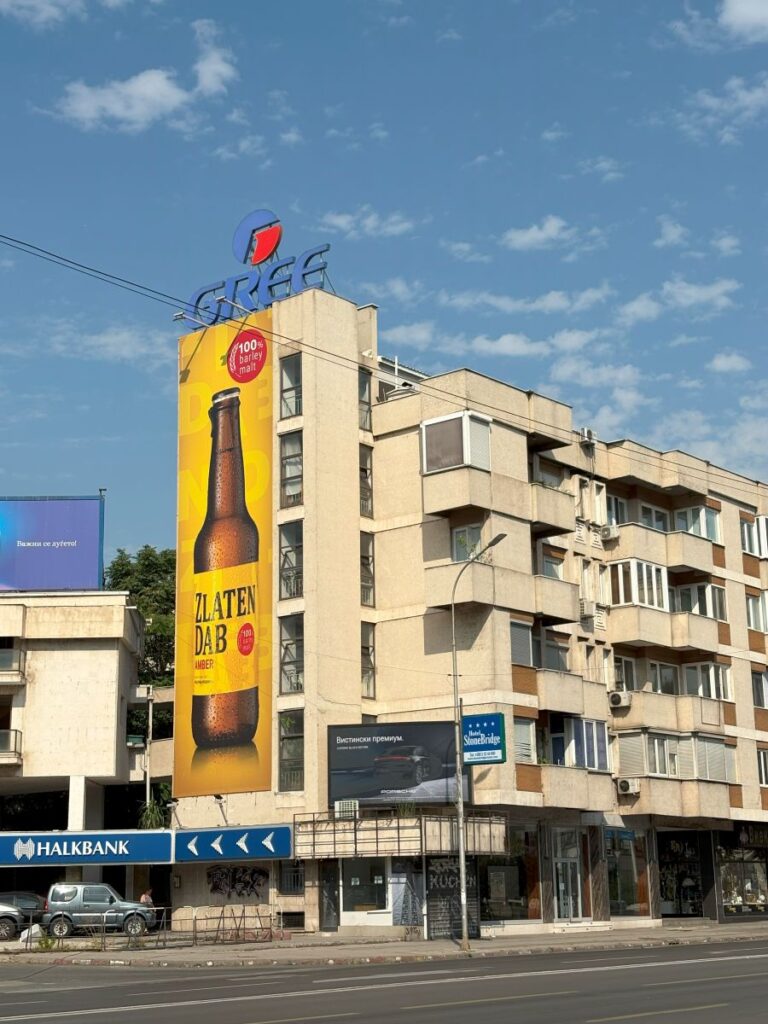
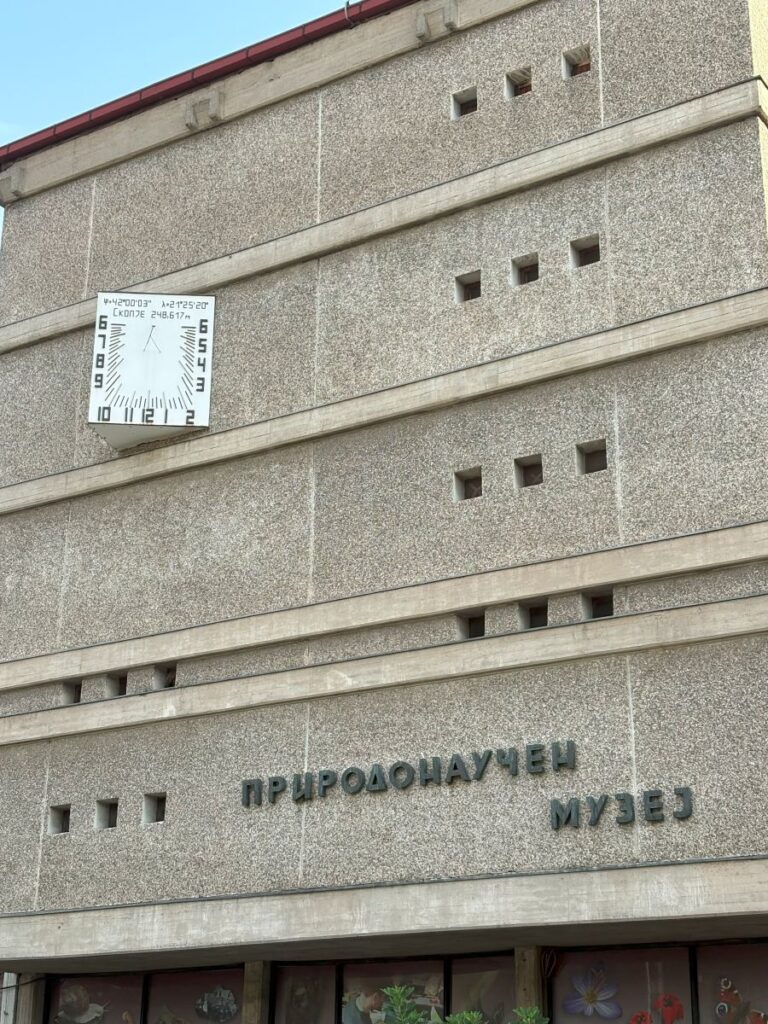
Many of the large grey concrete residential buildings fill the city, but they don’t dominate like they do in other Balkan cities. Walk around and find the treasures that have thankfully, so far, not been demolished. Two come to mind and they are fantastic.
One is the old Central Post Office. A monstrous building constructed in sections. The tower portion is said to be loosely based on the fortress located across the river. The large central flower or insect is the most intriguing portion.
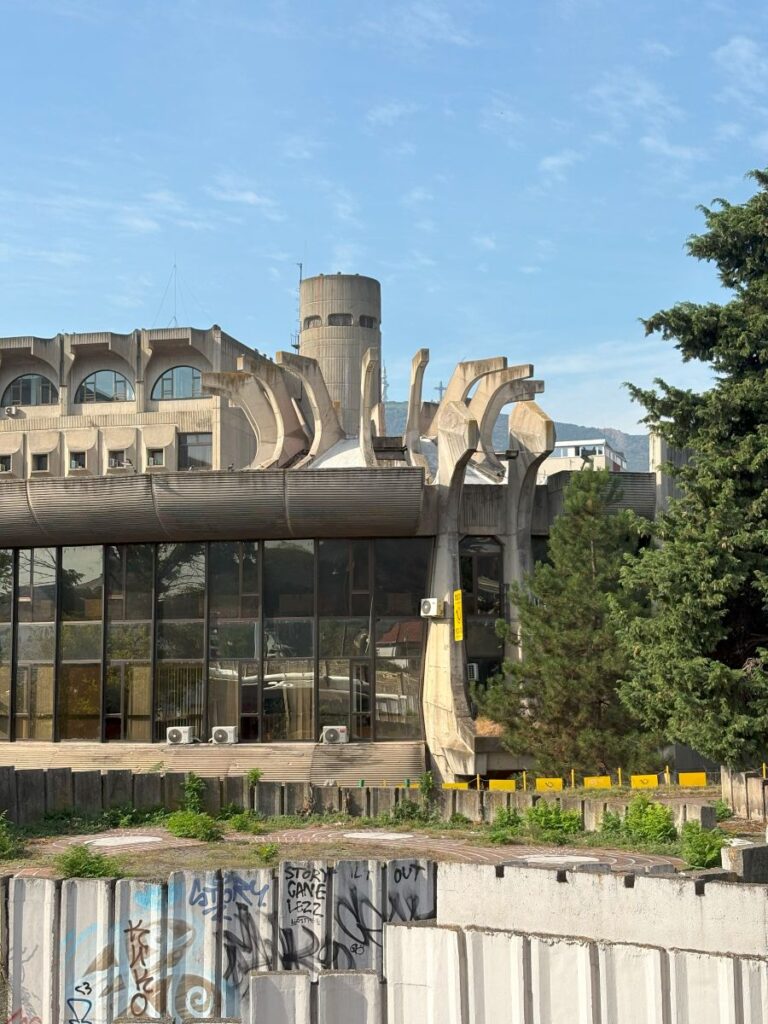
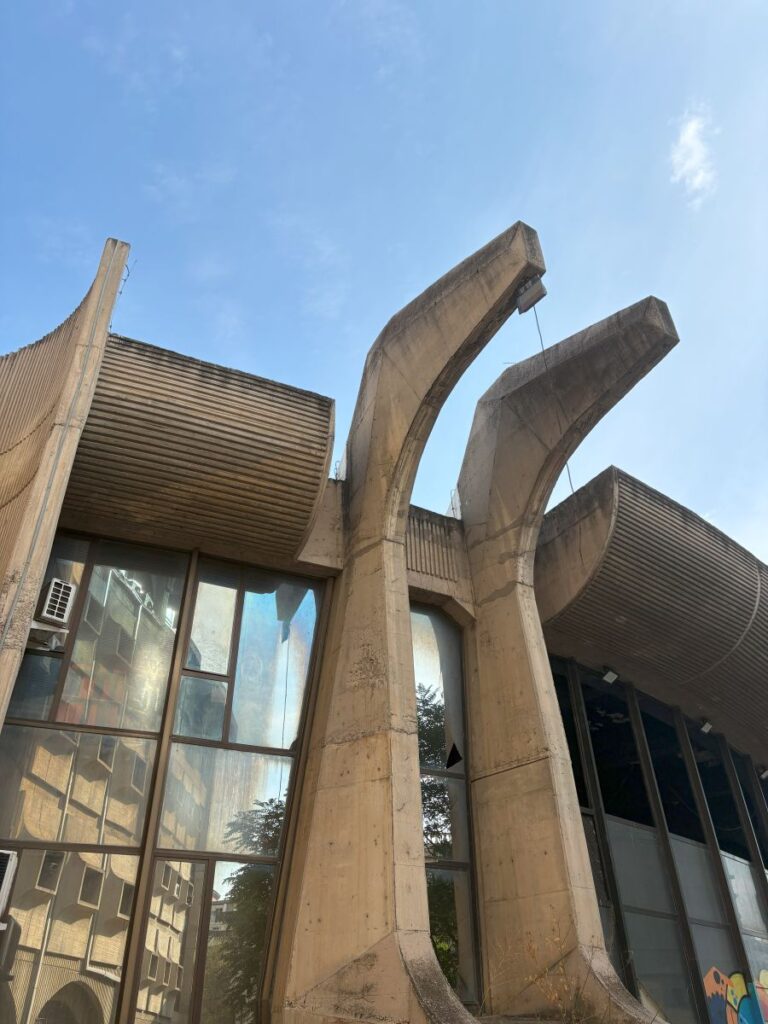
This is Brutalism in such a creative form. Unfortunately, the building is under serious disrepair after a large fire. International efforts are underway to try and create awareness and funds to preserve this fantastic structure.
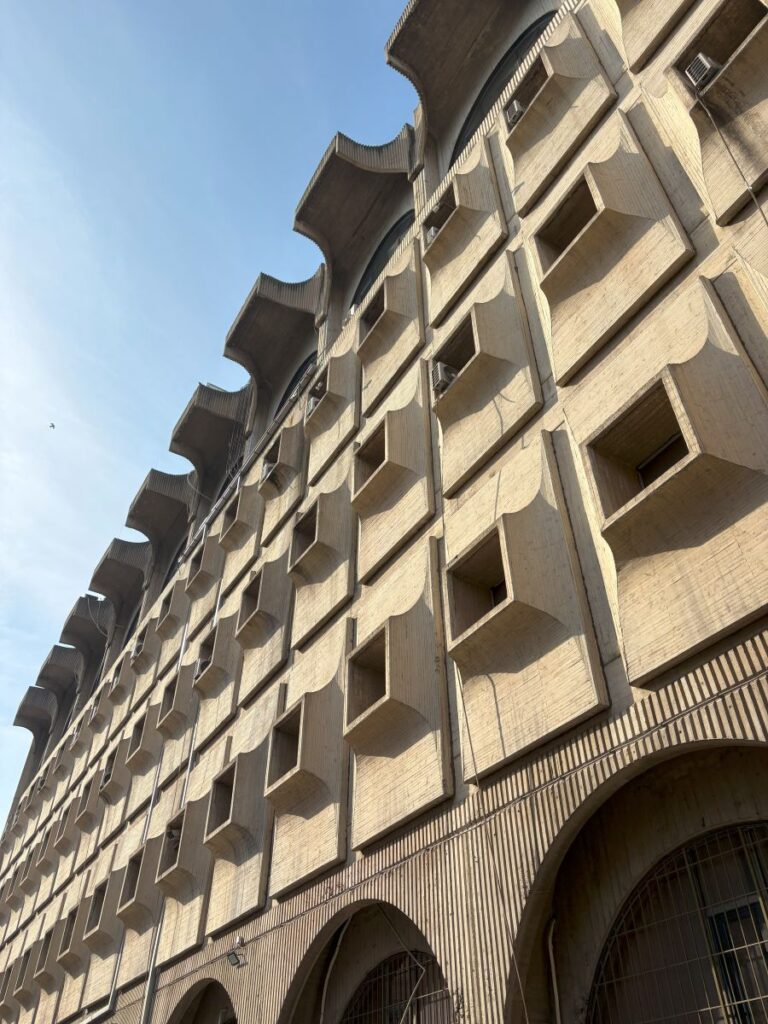
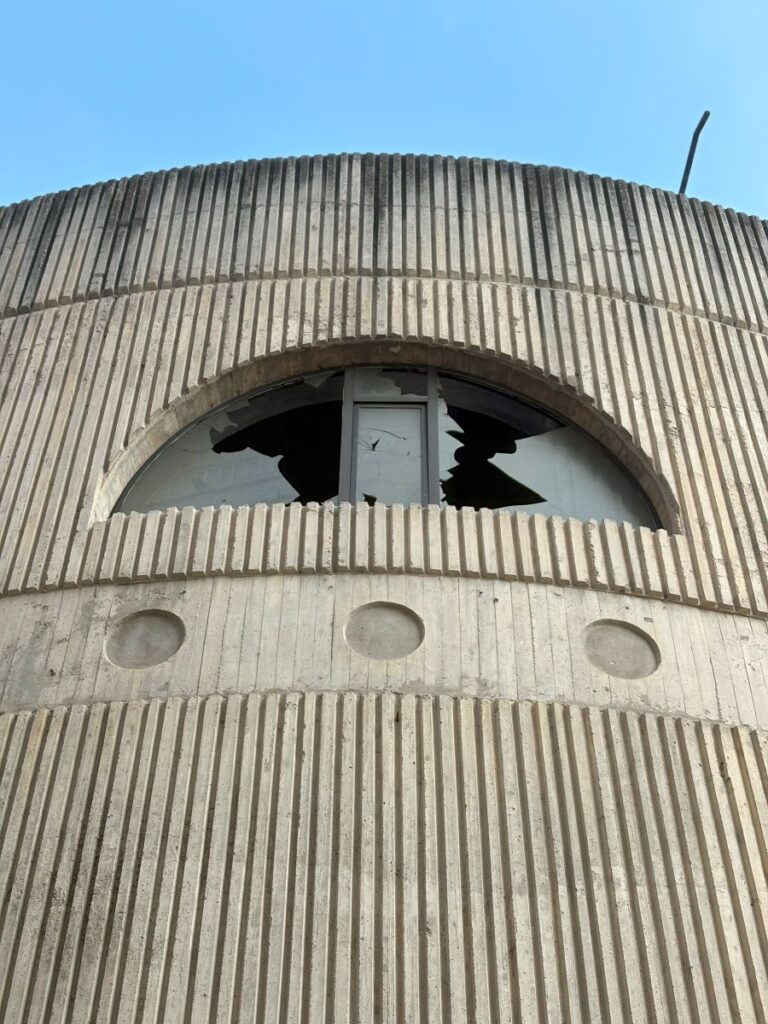
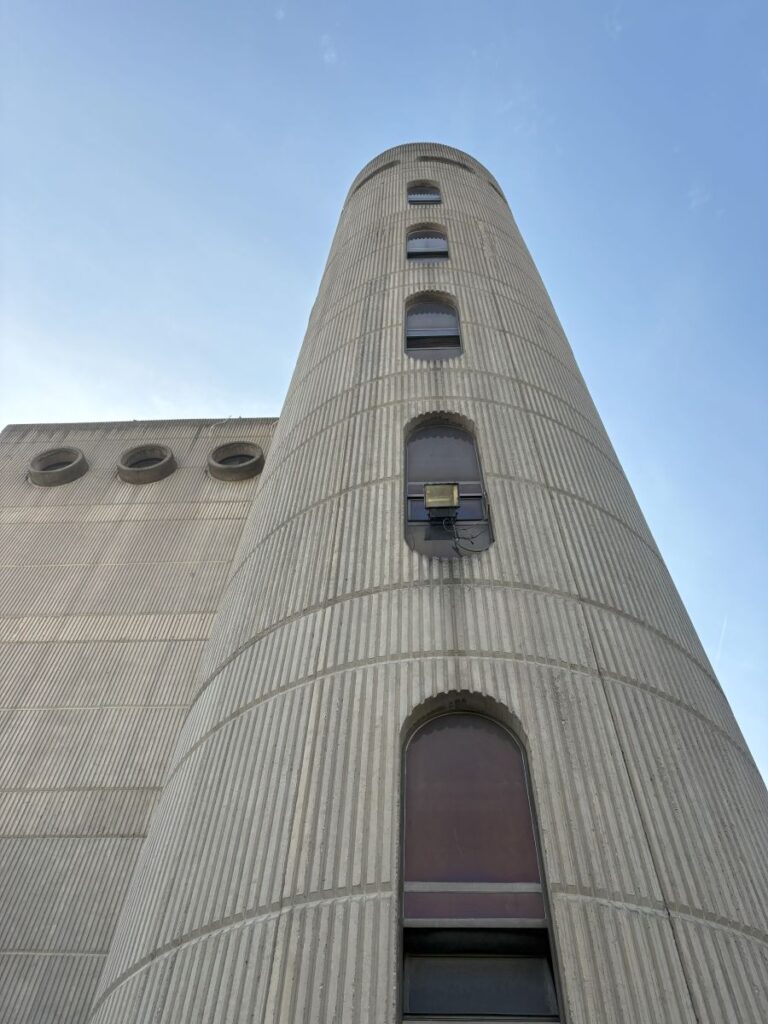
The second building I found is the National Library. A beautiful example of Post Modernism, this one I was able to enter. Again, she is under some disrepair, but still in use. While I could not access or even see any of the books, I was allowed to wander the vast entrance space.
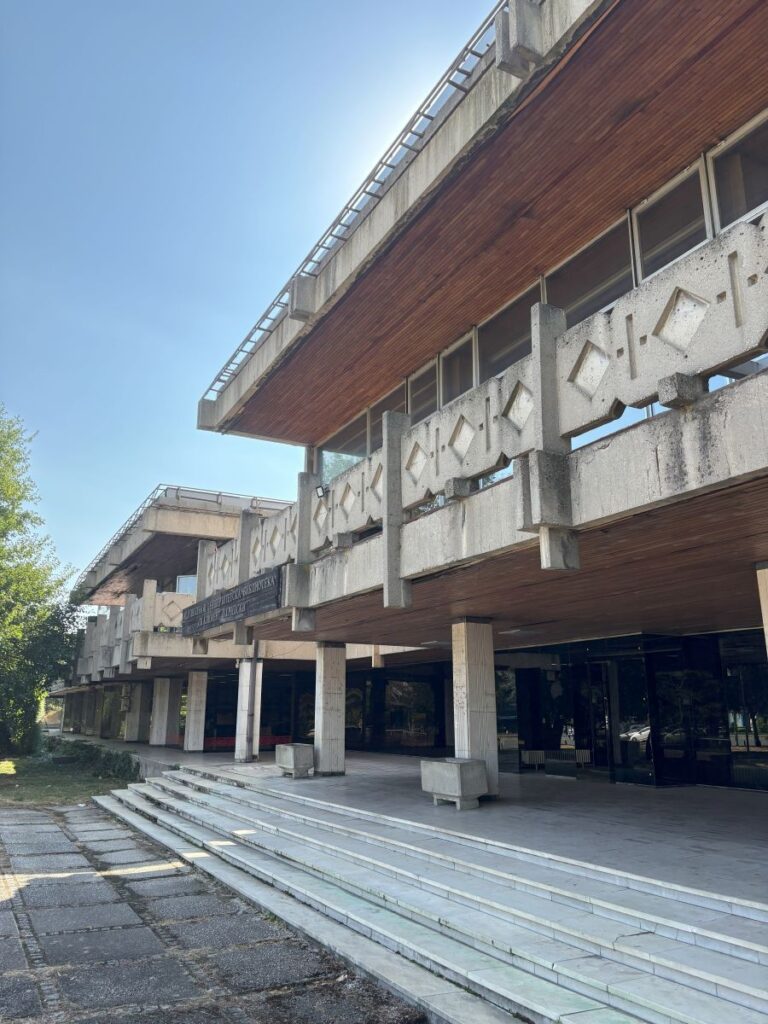
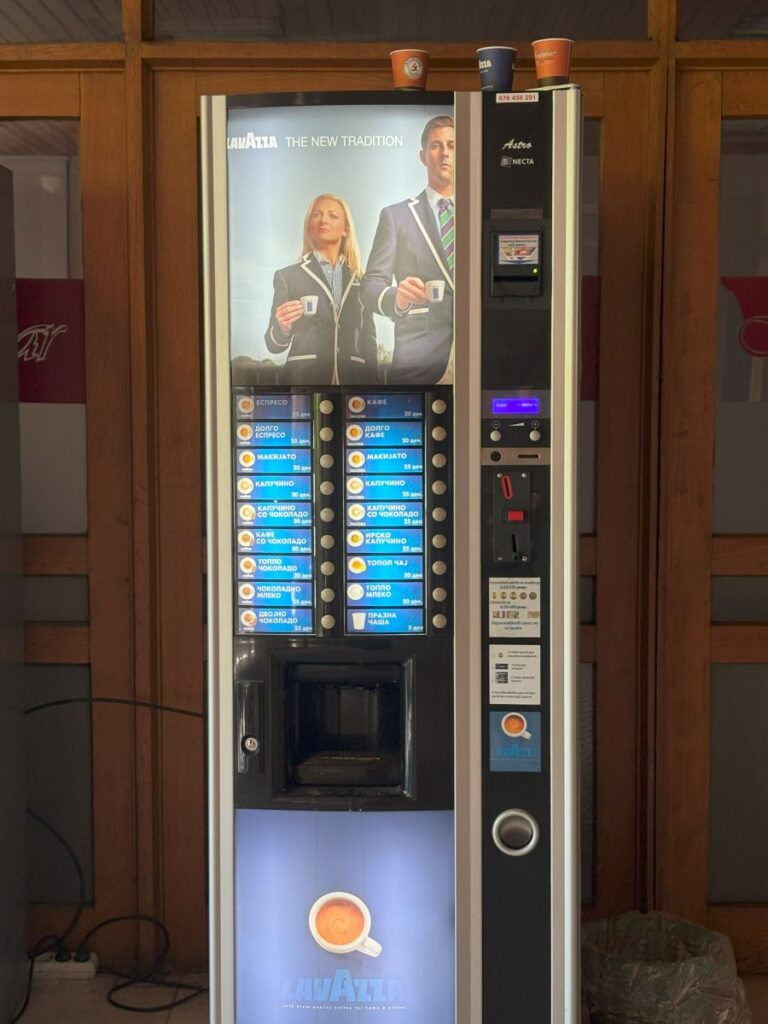
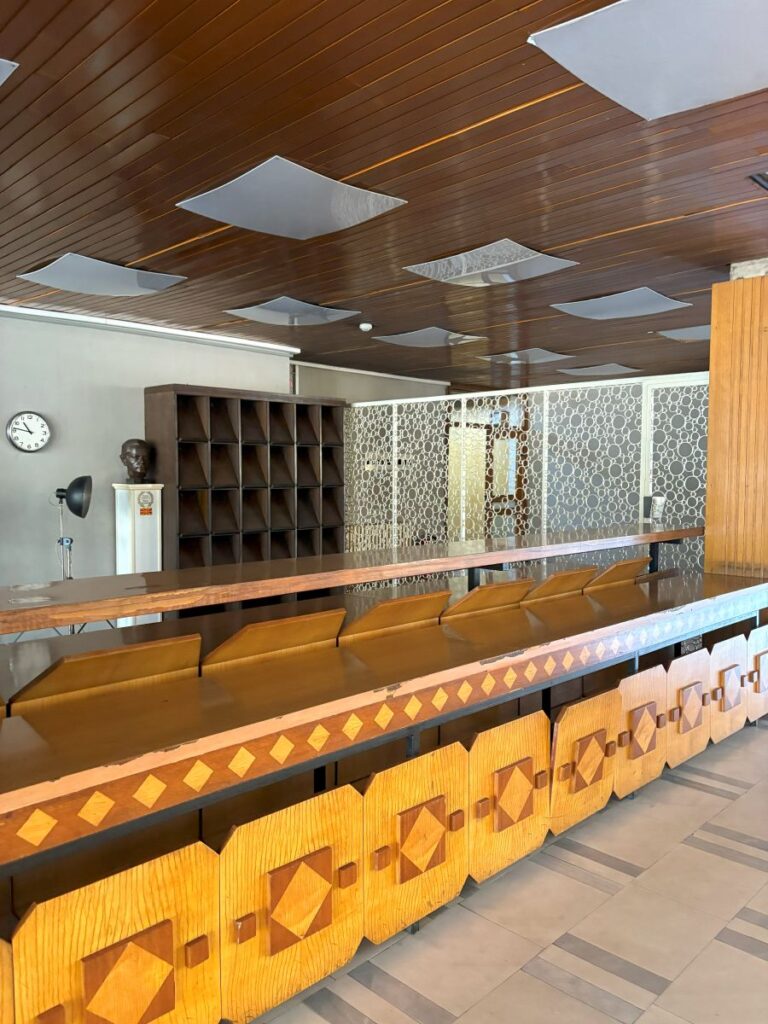
The old woodwork, artwork, items such as clocks, coffee machine, lamps etc were absolutely lovely to see. Upstairs is the extensive metal card catalogue system bringing feelings of nostalgia. The first and only drawer I opened, displayed a card for a Canadian book of all things!
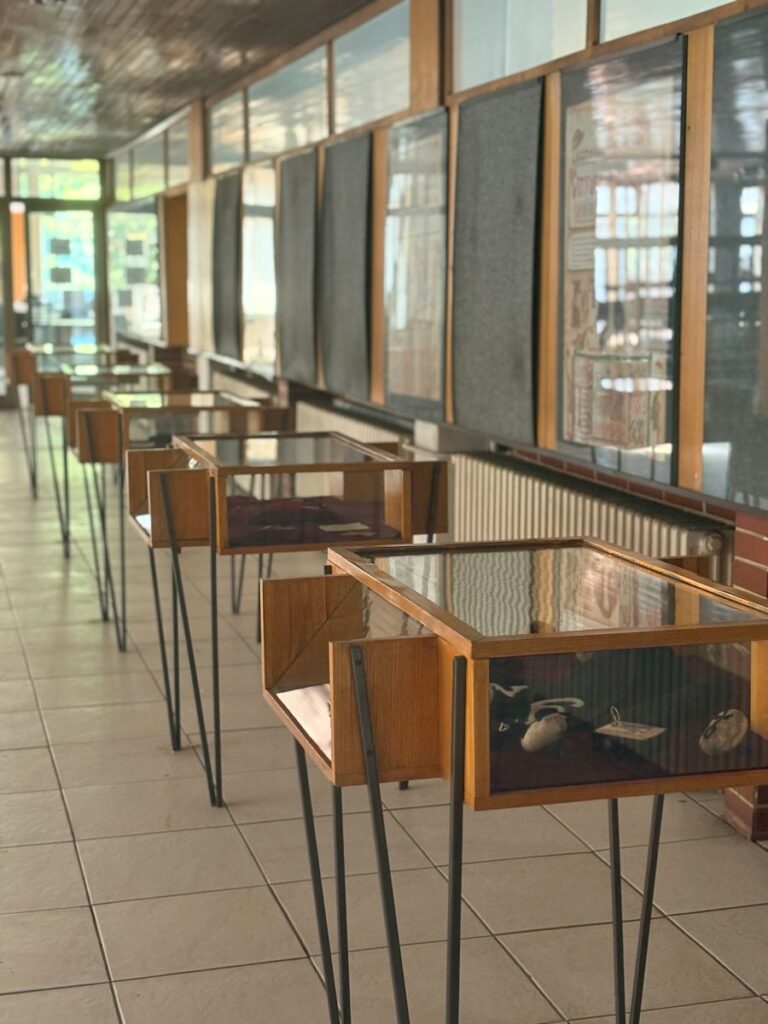
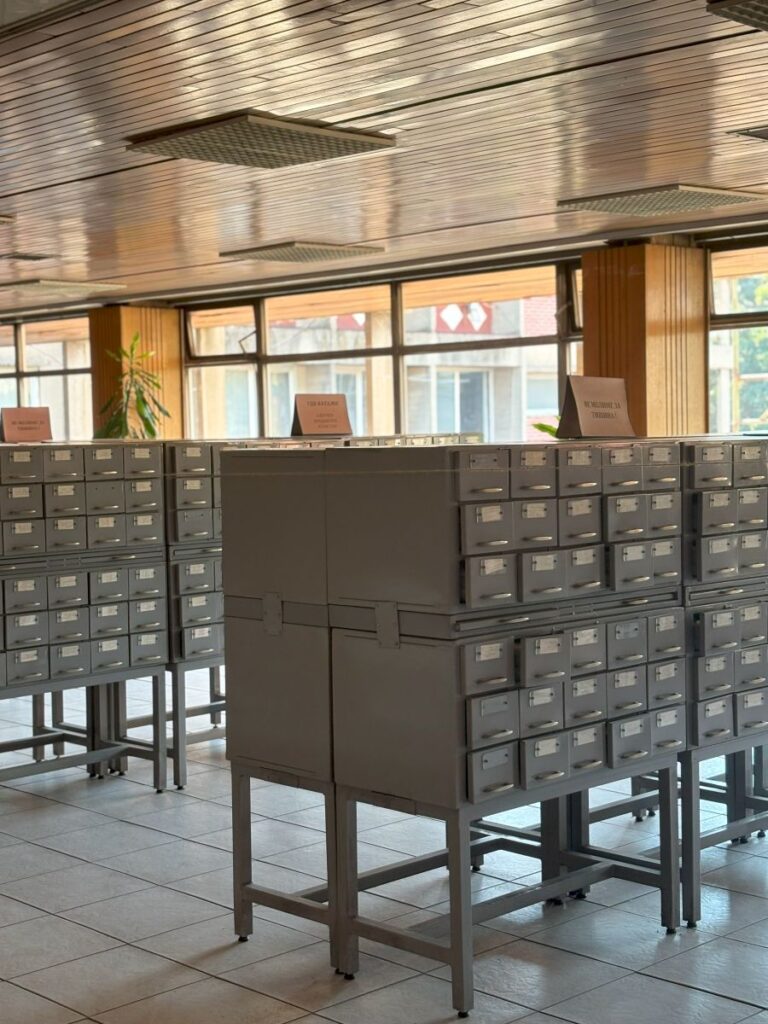
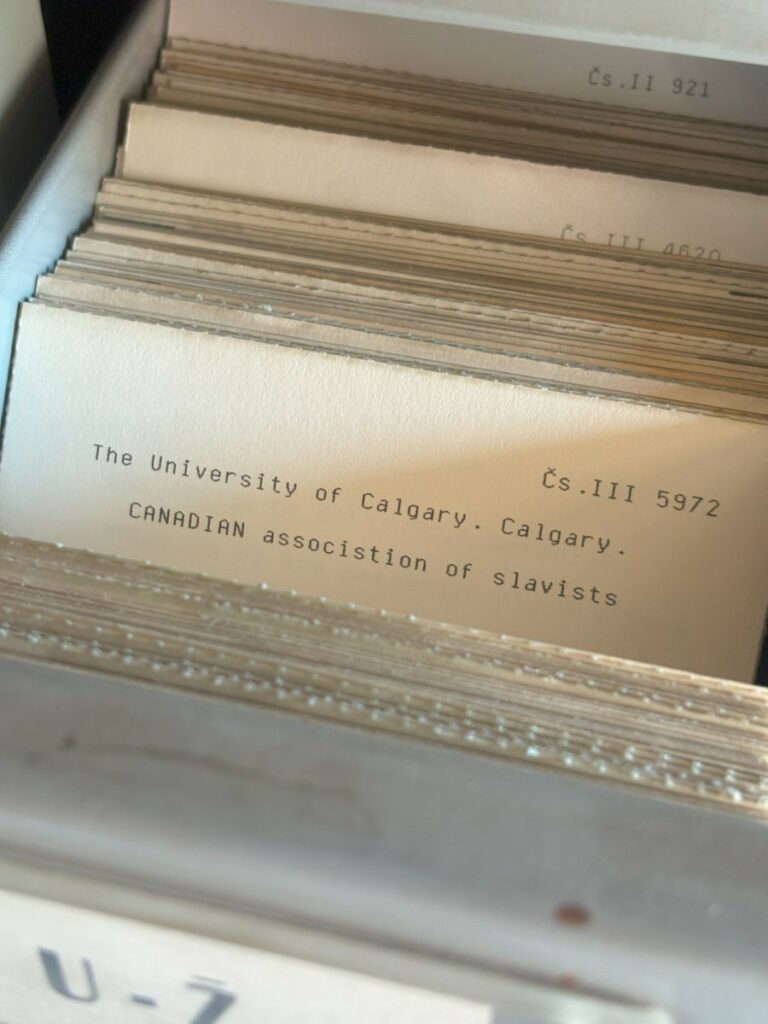
Skopje 2014
I must mention this project for a large amount of the architecture in the core of the city is a result of it. After the massive earthquake in 1963 the Yugoslav government quickly rebuilt in their concrete utilitarian style.
In 2009 the municipal leaders decided to revamp the look of the city and devised the Skopje 2014 project. Their intention was to bring the history back to the city, construct buildings that resembled ones that were demolished after the earthquake. At a cost of €700 million, government buildings, facades and bridges were constructed that changed the look of the Skopje entirely.
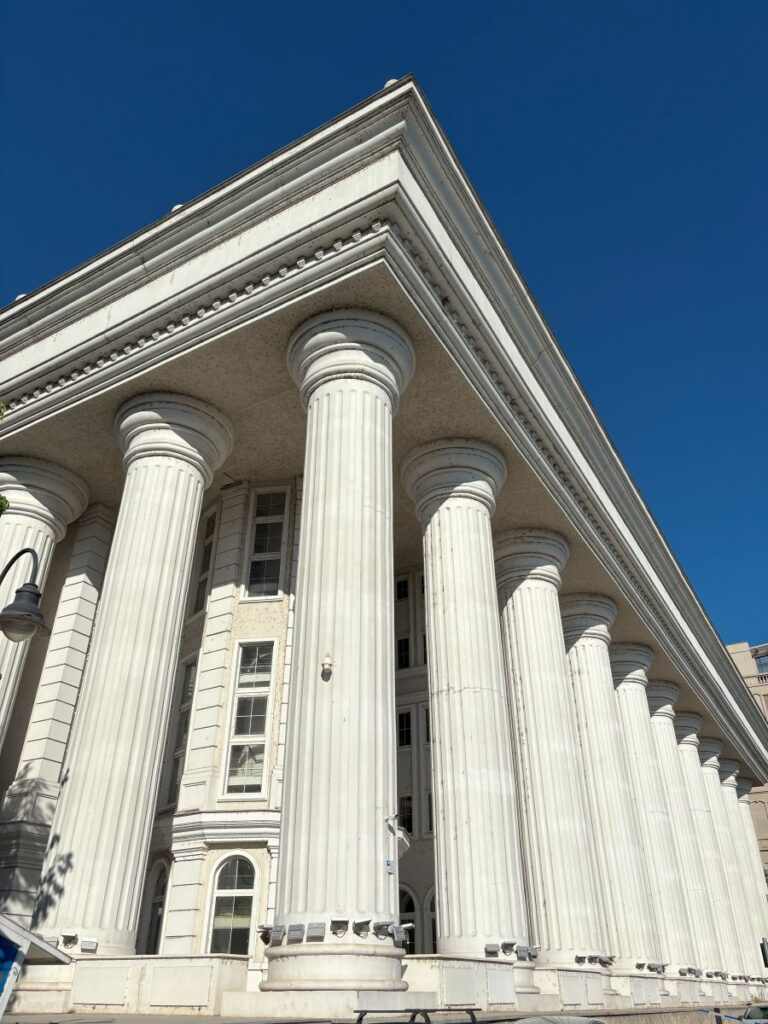
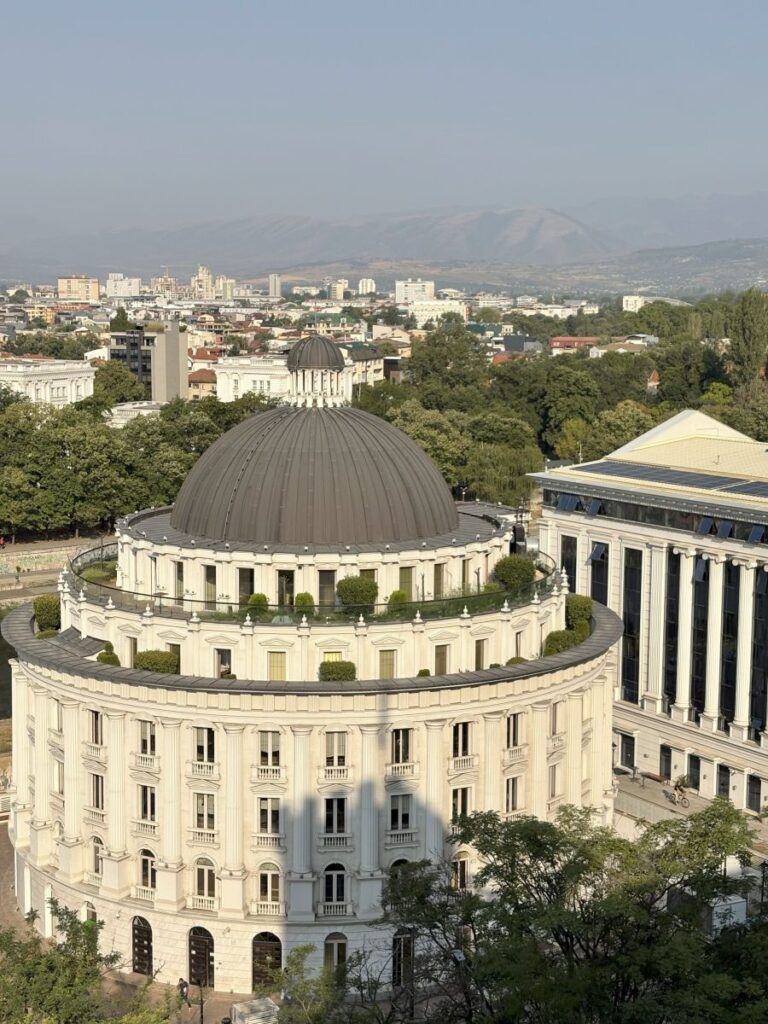
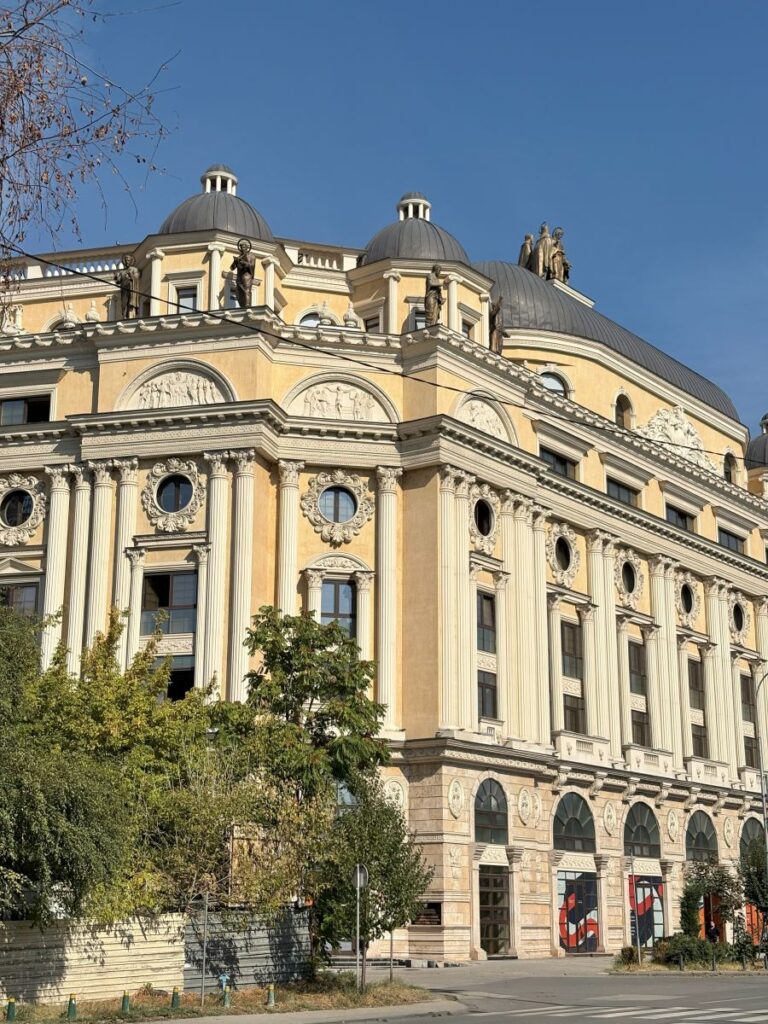
The new buildings are all of Neoclassical style, and many are simply massive in size. Their presence does not blend in any way, and most seem to simply grow right from the ground.
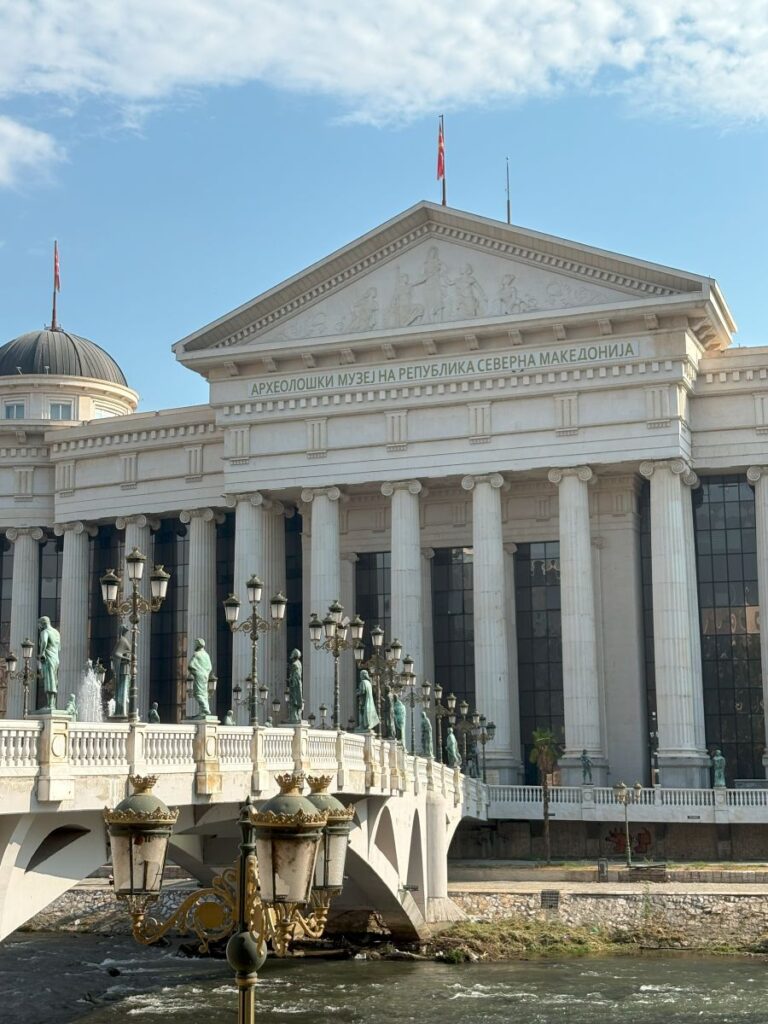
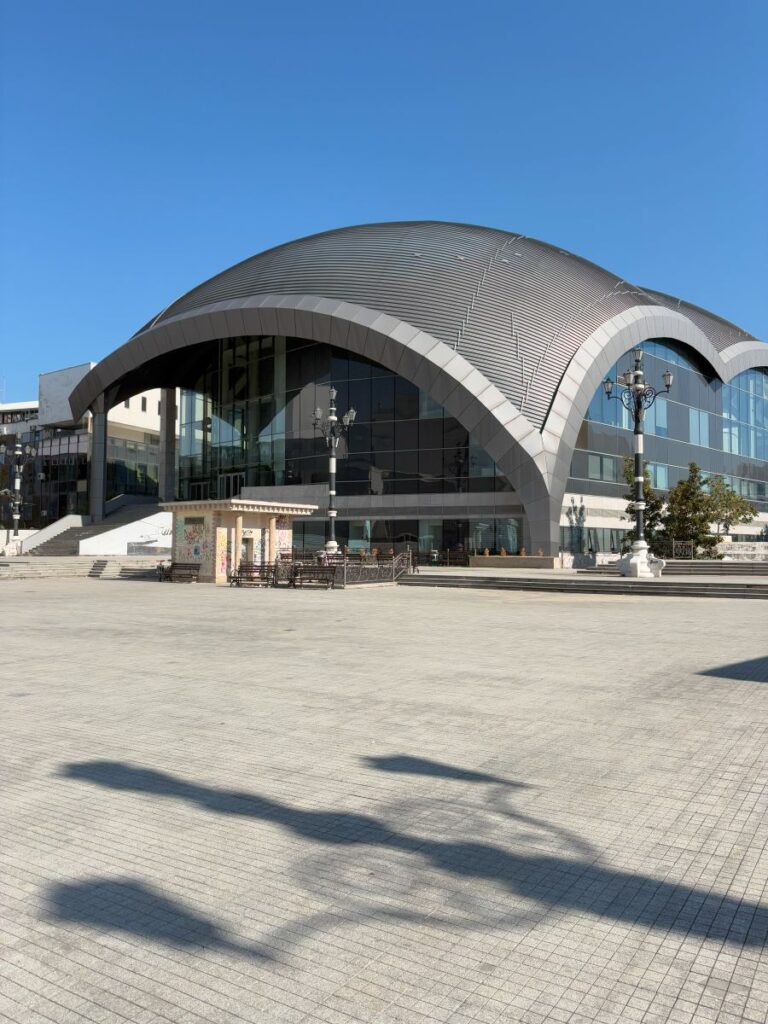
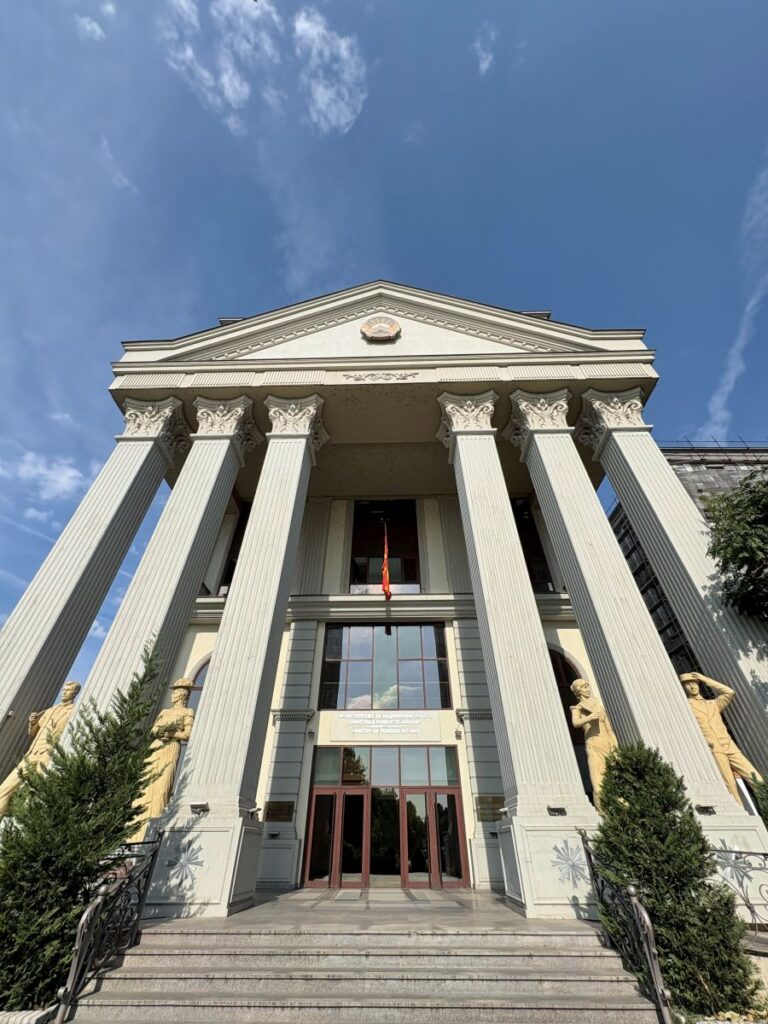
As I wander around the area near the Vardar River, where most of these are, I can see that already, in under fifteen years, they are beginning to decay. Chunks of façade have cracked and fallen away and it makes me wonder if they were constructed too quickly, to keep a deadline.
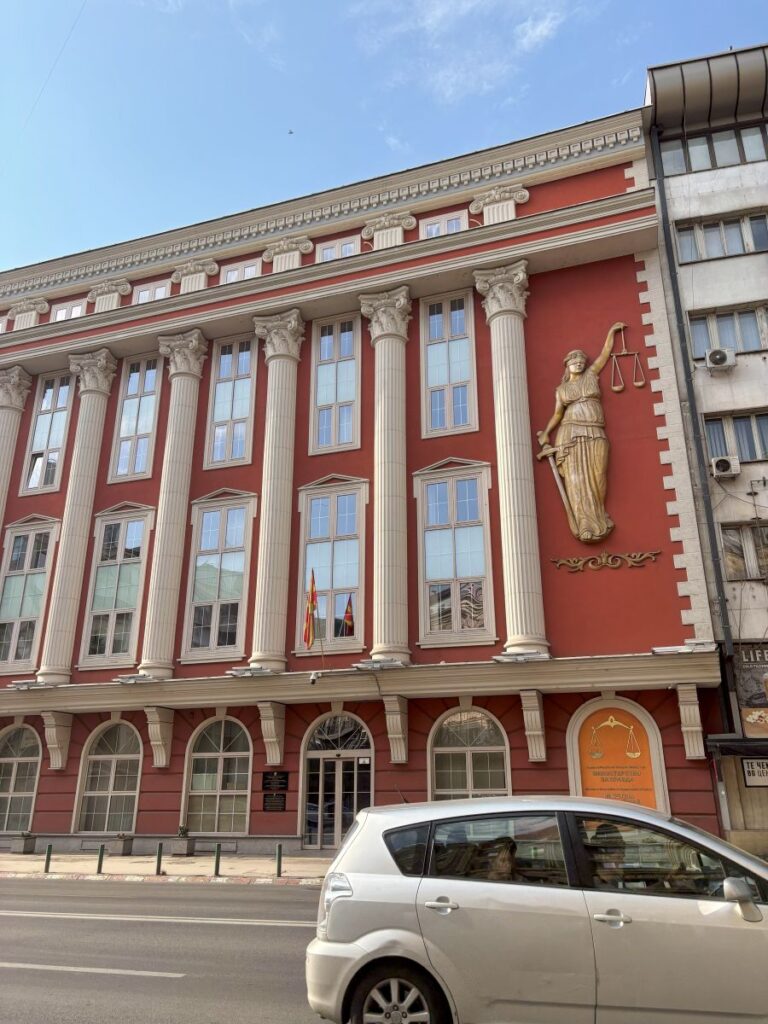
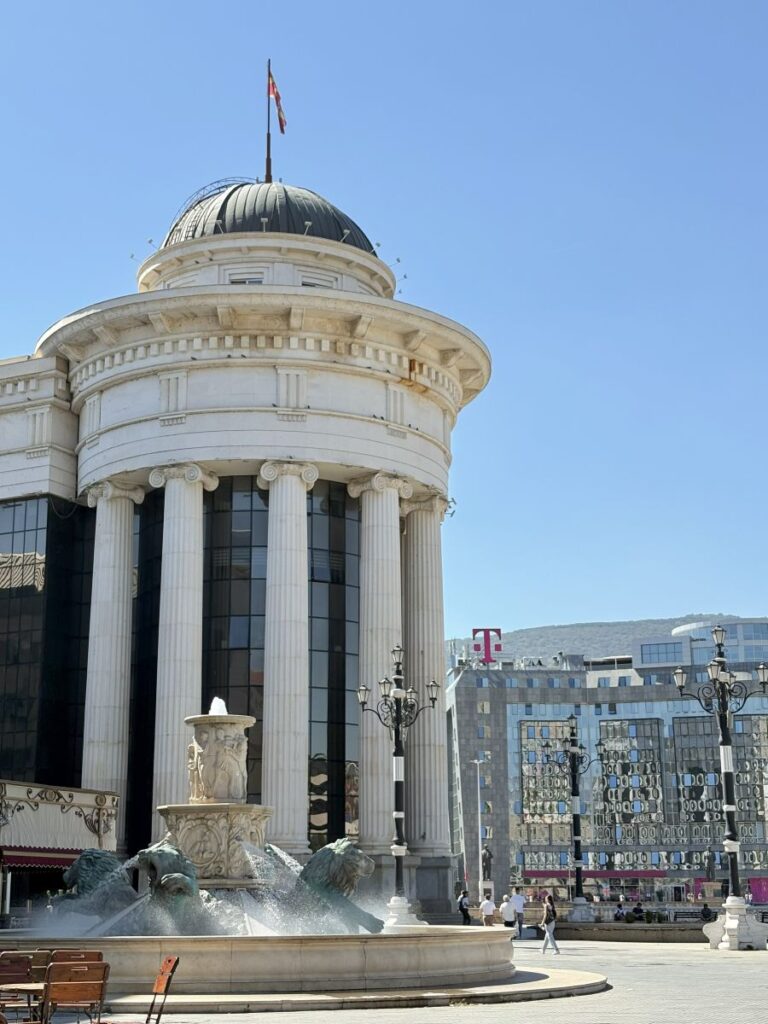
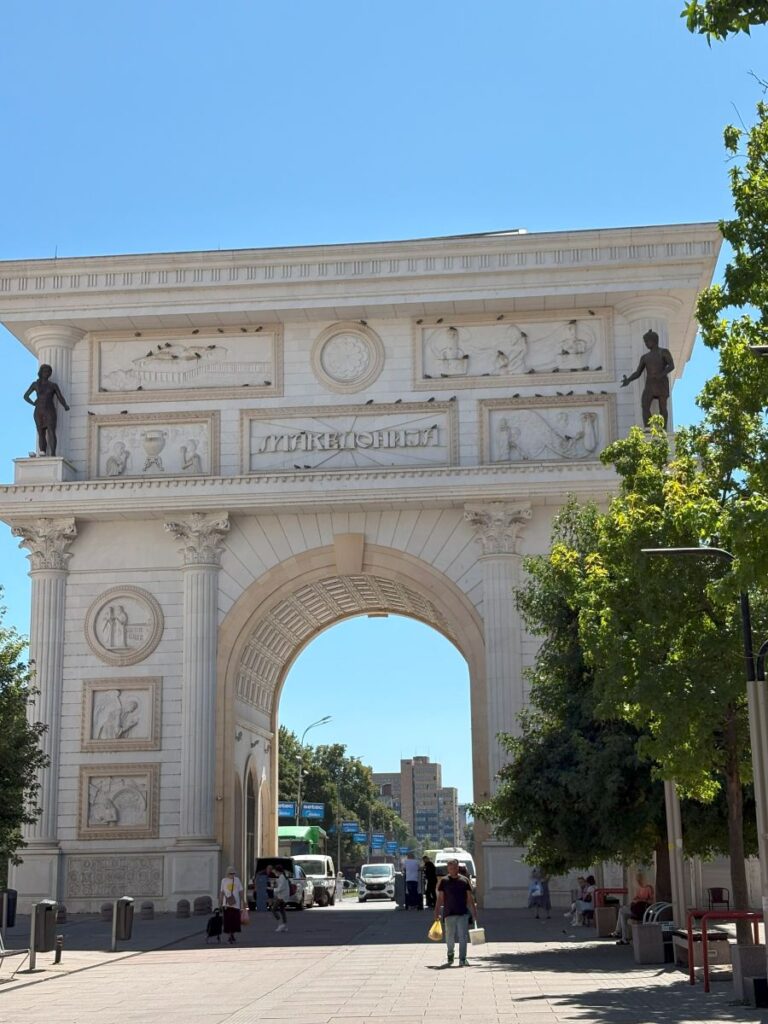
These buildings are beautiful in their own way, especially interesting are the ones with new facades. You see, many of these have old bones, only the face has been updated. Multiple streets in fact, all around the large central Macedonian Square. Old bones and new skin.
Glass & Steel
Like in Podgorica, I noticed the ultra modern buildings, the newest construction, is all glass and steel. It feels like the most popular current style or flavour. These can be found in the newest sort of downtown neighbourhood, not blending in with surrounding structures.
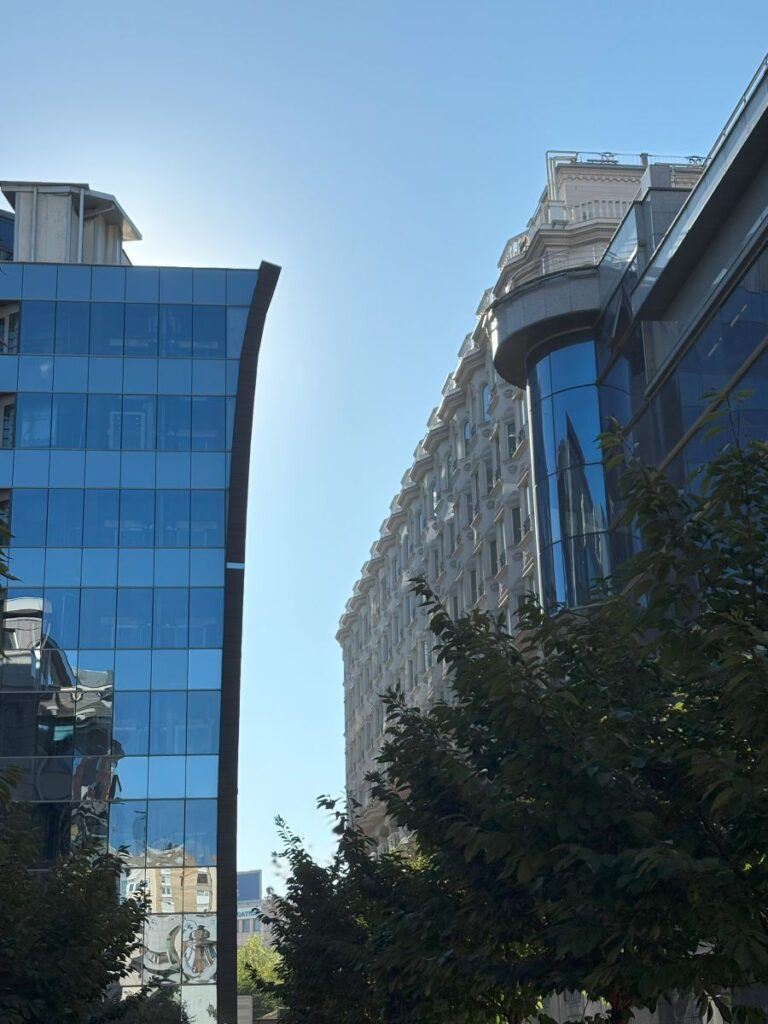
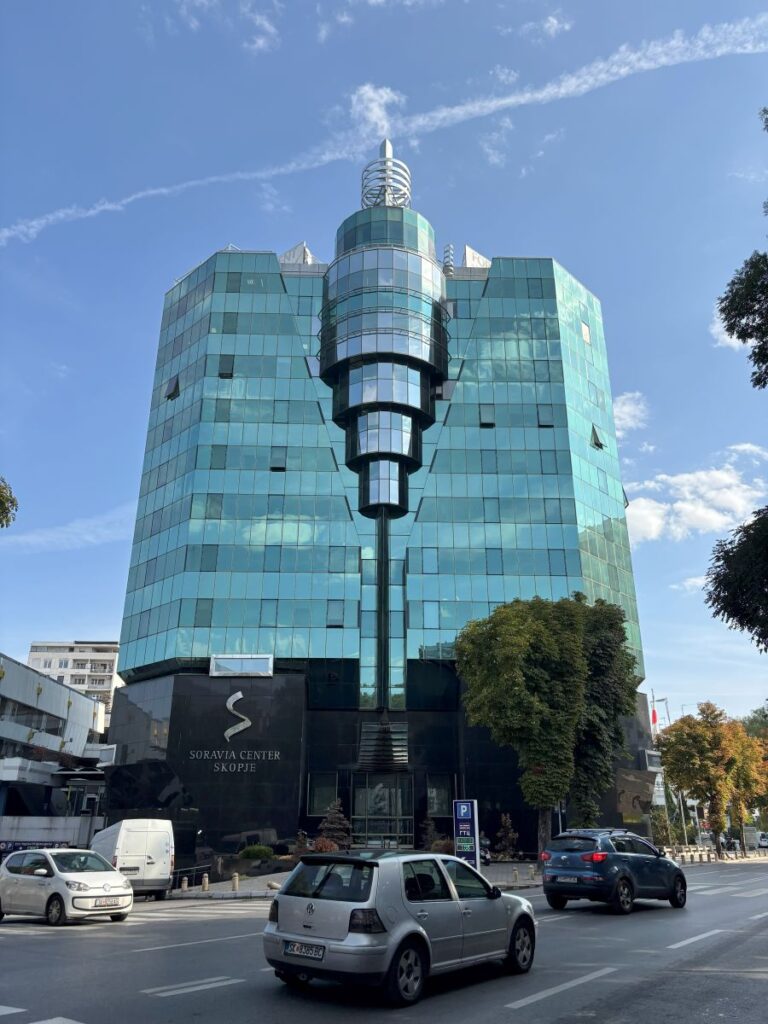
If Skopje excels at anything more than the other, it is varieties of architecture. The city is a great place to simply walk around, each day, and marvel at what you find. My favorites are definitely the older communist buildings; their graphics etched into the concrete surfaces. They won’t be around much longer I’m afraid, they are in such a state of disrepair.

